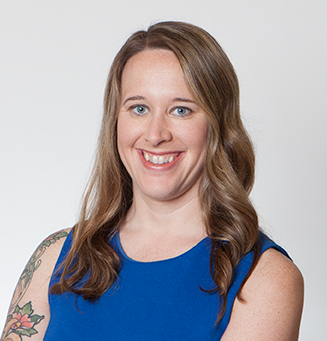What to consider when working with an accelerator
With all the new accelerators that are offering funding and services comes ample opportunity. One entrepreneur offers his advice on how to best work with one (or many) of them.

A number of accelerator programs have sprouted up across the country to provide regionally relevant resources and relationships to foster retail viability for young food and beverage startups. And it's not just about capital; entrepreneurs are taking advantage of all they have to offer. Patrick Mateer is one of them. To date, Mateer has worked with five separate accelerator programs, utilizing their resources to accelerate his company, Seal the Seasons, a frozen food brand with a mission to provide retailers with local produce year-round. Just recently, Seal the Seasons was selected as one of 10 companies for the Burt’s Bees Natural Launchpad grant program.
Here, Mateer shares lessons learned from his experiences working with various programs.
You’ve obviously found value in accelerators. What do you think brands can gain from working with one, or many?
Patrick Mateer: Every brand and entrepreneur has their own path to accomplishing their mission, but that path can be hard to find. You need a village to raise a startup. Building a village of mentors and advisers is the best method to find the right path. Good accelerators pull these assets together for their companies and bring the village to you.
Entrepreneurs encounter many forks in the road: hiring or firing a key employee, entering a new retail sector, working on brand redesign, or just finding the right manufacturer for your product. Accelerators are a place where a brand can find a wealth of resources to address their known and unknown problems. Sometimes having an accelerator program to dig deep and uncover the unknown problems is just as important as solving the known ones. Entrepreneurs are great problem solvers, but we’re often sunk by the problems we never saw coming. Accelerators can help companies break through barriers and pivot effectively instead of falling flat.
Just like your mentor from business school, your first accelerator may or may not be the best place to continue finding resources as you scale. I’ve found that working with multiple accelerators over the first five years of your business can help bring the right resources at the right times. Most founders will tell you that selling your first bag is just as challenging as your 10,000th store, but for different reasons.
What do you think brands should look for in an accelerator when applying? How can you know if it’ll be a good fit?
PM: Brands should look at both the accelerator and the profile of other companies in the cohort. From the accelerator, I look for leadership, extended collaboration, shared goals and humility. In your fellow program participants, look for companies at the same stage as your business.
The accelerator’s leadership should have been in your shoes and should understand an entrepreneur’s point of view. While the program is a finite length, look for extended engagement and collaboration with leadership and mentors. Ask, what will our relationship be in 12 months, 36 months? If the accelerator takes equity, how will they continue to support you as you continue to build value for them? In considering shared goals, is the program able to address your problems? Are your missions aligned with each other? Do their resources match where your company is and where it needs to go? You can always put off till the next cycle. Finally, does the accelerator take feedback often and make changes based off the feedback? Make sure an accelerator is ready to make changes themselves to help your brand.
What does a company need to do to get ready to pitch to one?
PM: Accelerators are your partners, just like investors. They usually take equity and will be with you for the length of your business. Just like other pitches, have a clear problem you’re solving, defined mission, unique value proposition, no-nonsense business model, current financial metrics and a strategy to move to the next level. Accelerators are there to help you find the answers to define your path… they won’t have all the answers waiting. Be ready to work!
Have you applied to accelerator programs that you weren’t selected for? What kept you applying?
PM: Resiliency is one of the most important traits of an entrepreneur. If you haven’t gotten enough no’s you probably aren’t pitching enough! I was turned down from plenty of programs early on. All these applications helped us better articulate our business model until we found the right pitch. I kept applying because I had a vision for a better food system that I knew could become a reality. When times are tough, turn back to your mission and why you got started on day zero.
What can a brand expect to do on its side to make the experience most worthwhile?
PM: Come prepared to work hard. Offer feedback regularly; ask for a feedback form if one isn’t provided. Get to know your cohort companies and build lasting relationships.
Beyond that, I suggest conducting an internal business evaluation among your core team. Think hard about your top problems, and think deeply about areas that could develop into problems if you grow too quickly or not quickly enough. Once you’ve joined the program, work with your accelerator to conduct the same evaluation again with their help—do the same focus areas rise to the top? Our recent accelerator, Food Future Co., consistently evaluated our business to stay ahead of problems and investor questions. Its outside perspective and consistent evaluation was critical.
Oh, and come ready to work! Accelerators offer time to seriously get stuff done.
About the Author(s)
You May Also Like




